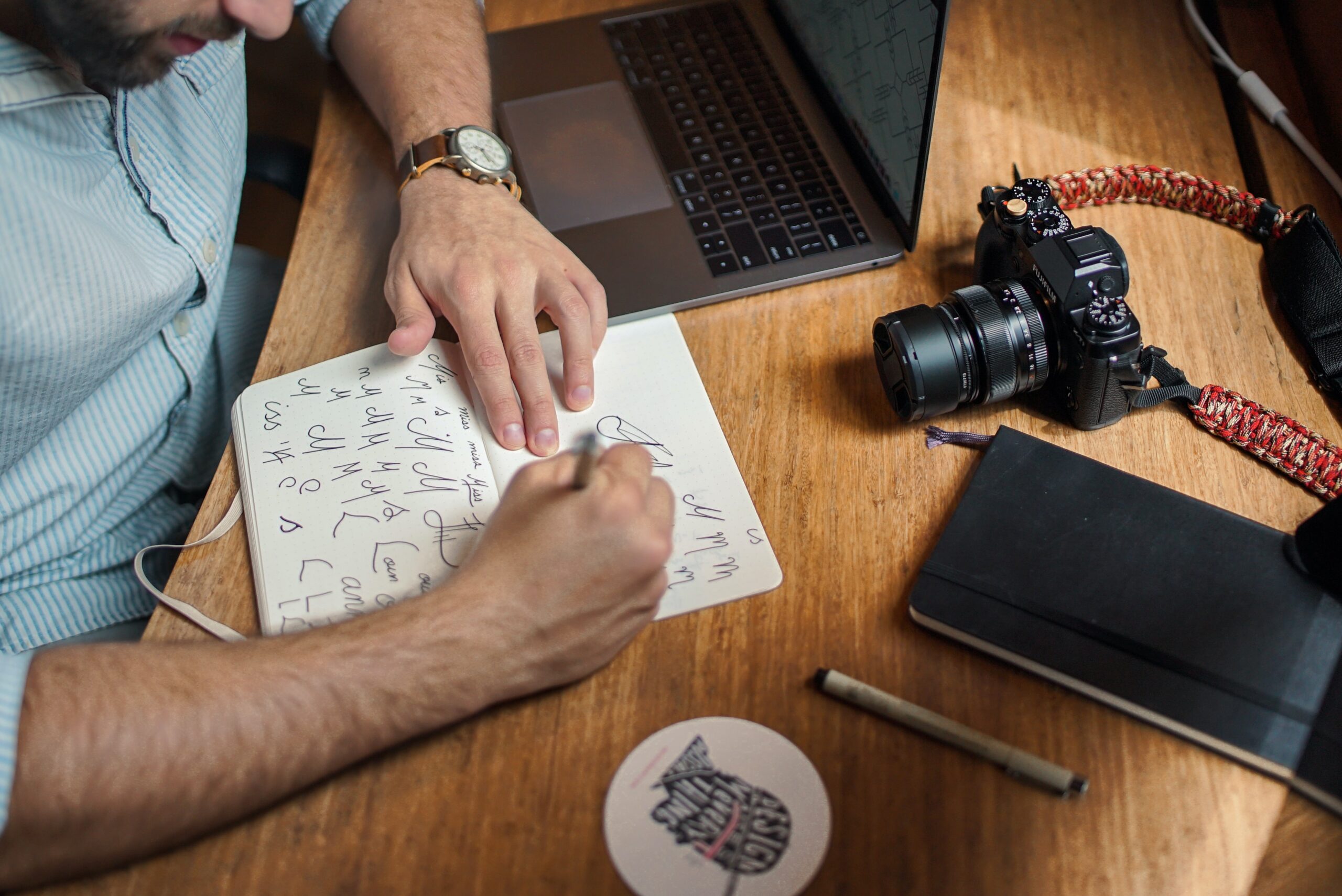Personalized packaging has emerged as a growing trend in the field of design e-commerce. With the rise of online shopping, businesses are increasingly recognizing the importance of creating unique and memorable experiences for their customers. Personalized packaging offers a way to stand out from the competition and leave a lasting impression on consumers. This trend involves tailoring the packaging design to reflect the brand’s identity and values, as well as incorporating individual customer preferences. By embracing personalized packaging, businesses can enhance their brand image, foster customer loyalty, and ultimately drive sales in the competitive e-commerce landscape.
The Impact of Personalized Packaging on Brand Identity
In today’s competitive business landscape, companies are constantly seeking innovative ways to stand out from the crowd and create a lasting impression on their customers. One emerging trend that has gained significant traction in recent years is personalized packaging. This unique approach to packaging design allows brands to connect with their customers on a deeper level and create a memorable brand experience.
The impact of personalized packaging on brand identity cannot be overstated. By incorporating elements that are specific to a brand’s identity, such as logos, colors, and slogans, companies can create a cohesive and recognizable packaging design that sets them apart from their competitors. This not only helps to reinforce brand recognition but also fosters a sense of loyalty and trust among customers.
One of the key benefits of personalized packaging is its ability to create a sense of exclusivity. When customers receive a package that is tailored specifically to them, it makes them feel special and valued. This personalized touch can go a long way in building a strong emotional connection between the brand and the customer, leading to increased customer satisfaction and loyalty.
Furthermore, personalized packaging allows brands to tell a story. By incorporating unique design elements and messaging, companies can communicate their brand values and mission to their customers. This storytelling aspect of personalized packaging helps to create a more meaningful and memorable brand experience, which in turn can lead to increased customer engagement and brand advocacy.
Another important aspect of personalized packaging is its potential to create a sense of anticipation and excitement. When customers receive a package that is customized to their preferences, it creates a sense of surprise and delight. This element of surprise not only enhances the overall customer experience but also encourages customers to share their excitement with others, thereby increasing brand visibility and reach.
Moreover, personalized packaging can also serve as a powerful marketing tool. When customers receive a package that is visually appealing and unique, they are more likely to share it on social media platforms, thereby generating free publicity for the brand. This word-of-mouth marketing can be incredibly valuable, as it allows brands to reach a wider audience and attract new customers.
In conclusion, personalized packaging is a growing trend in design e-commerce that has a significant impact on brand identity. By incorporating elements that are specific to a brand’s identity, companies can create a cohesive and recognizable packaging design that sets them apart from their competitors. This personalized approach not only fosters a sense of exclusivity and loyalty among customers but also allows brands to tell a story and create a memorable brand experience. Additionally, personalized packaging creates a sense of anticipation and excitement, leading to increased customer engagement and brand advocacy. Furthermore, it serves as a powerful marketing tool, as customers are more likely to share visually appealing and unique packages on social media platforms. As the e-commerce industry continues to evolve, personalized packaging will undoubtedly play a crucial role in helping brands differentiate themselves and create a lasting impression on their customers.
How Personalized Packaging Enhances Customer Experience
In today’s competitive business landscape, companies are constantly seeking innovative ways to stand out from the crowd and create a memorable customer experience. One emerging trend that has gained significant traction in recent years is personalized packaging. This unique approach to product presentation not only enhances the overall customer experience but also helps businesses build brand loyalty and increase customer satisfaction.
Personalized packaging goes beyond the traditional concept of simply placing a product in a box. It involves tailoring the packaging design to reflect the individuality and preferences of the customer. By incorporating elements such as the customer’s name, favorite colors, or even a personalized message, businesses can create a sense of exclusivity and make the customer feel valued.
One of the key benefits of personalized packaging is its ability to create a lasting impression on the customer. When a customer receives a package that is customized specifically for them, it shows that the company has taken the time and effort to understand their needs and preferences. This attention to detail not only enhances the perceived value of the product but also leaves a positive impression that can lead to repeat purchases and word-of-mouth recommendations.
Furthermore, personalized packaging can also serve as a powerful marketing tool. In today’s digital age, where social media plays a significant role in shaping consumer behavior, unique and visually appealing packaging can generate buzz and attract attention. Customers are more likely to share their unboxing experiences on social media platforms, providing businesses with free advertising and increased brand exposure.
Another advantage of personalized packaging is its ability to create a sense of anticipation and excitement. When a customer receives a package that is beautifully designed and customized, it adds an element of surprise and delight to the overall shopping experience. This emotional connection can help businesses differentiate themselves from their competitors and create a loyal customer base.
Moreover, personalized packaging can also be used as a means of communication. By including a personalized message or a handwritten note, businesses can establish a direct line of communication with their customers. This personal touch not only shows appreciation but also provides an opportunity for businesses to gather feedback, address any concerns, or even upsell additional products or services.
While personalized packaging offers numerous benefits, it is essential for businesses to strike the right balance between customization and cost-effectiveness. Designing and producing personalized packaging can be more time-consuming and expensive compared to traditional packaging methods. Therefore, it is crucial for businesses to carefully evaluate their target market, budget, and overall business objectives before implementing personalized packaging strategies.
Personalized Packaging: A Key Differentiator in E-commerce
In today’s highly competitive e-commerce landscape, businesses are constantly seeking ways to differentiate themselves from their competitors. One emerging trend that has gained significant traction in recent years is personalized packaging. This innovative approach to packaging design allows companies to create a unique and memorable experience for their customers, setting themselves apart from the crowd.
Personalized packaging goes beyond the traditional concept of simply enclosing a product in a box. It involves tailoring the packaging to reflect the brand’s identity and values, as well as the individual preferences of the customer. By doing so, businesses can create a sense of exclusivity and make their customers feel special.
One of the key advantages of personalized packaging is its ability to enhance brand recognition. When a customer receives a package that is beautifully designed and customized with the brand’s logo and colors, it creates a lasting impression. This not only reinforces the brand’s identity but also increases the likelihood of repeat purchases and word-of-mouth referrals.
Furthermore, personalized packaging allows businesses to tap into the power of storytelling. By incorporating elements such as personalized messages, images, or even interactive features, companies can create a narrative around their products. This storytelling approach helps to establish an emotional connection with customers, making them more likely to engage with the brand on a deeper level.
Another significant benefit of personalized packaging is its potential to drive customer loyalty. When customers receive a package that is tailored to their preferences, it shows that the brand values their individuality. This personalized touch can foster a sense of loyalty and make customers feel more connected to the brand. As a result, they are more likely to become repeat customers and advocates for the brand.
Personalized packaging also offers businesses an opportunity to gather valuable customer data. By incorporating unique codes or QR codes on the packaging, companies can encourage customers to provide feedback or participate in surveys. This data can then be used to gain insights into customer preferences, improve products, and refine marketing strategies.
Moreover, personalized packaging can be a powerful tool for enhancing the unboxing experience. In today’s digital age, where social media plays a significant role in shaping consumer behavior, the unboxing experience has become a phenomenon in itself. Customers love to share their unboxing experiences on social media platforms, and personalized packaging provides them with the perfect opportunity to do so. By creating visually appealing and Instagram-worthy packaging, businesses can generate buzz and attract new customers through user-generated content.
While personalized packaging offers numerous benefits, it is essential for businesses to strike the right balance. The packaging should be visually appealing and reflect the brand’s identity, but it should also be practical and cost-effective. Companies need to consider factors such as production costs, shipping requirements, and environmental sustainability when designing personalized packaging solutions.
The Role of Personalized Packaging in Sustainable Design Practices
In today’s fast-paced world, where online shopping has become the norm, businesses are constantly looking for ways to stand out from the competition. One emerging trend in the e-commerce industry is personalized packaging. This innovative approach not only adds a unique touch to the customer’s shopping experience but also aligns with sustainable design practices.
Personalized packaging goes beyond the traditional brown cardboard box. It involves customizing the packaging to reflect the brand’s identity and create a memorable unboxing experience for the customer. This can be achieved through various means, such as using branded tissue paper, adding personalized notes or stickers, or even incorporating the customer’s name or initials on the packaging.
The role of personalized packaging in sustainable design practices cannot be overlooked. As consumers become more conscious of their environmental footprint, businesses are under pressure to adopt eco-friendly practices. Personalized packaging offers a solution by reducing waste and promoting reusability.
By customizing the packaging to fit the product perfectly, businesses can minimize the need for excessive padding or filler materials. This not only reduces waste but also lowers shipping costs, benefiting both the environment and the bottom line. Additionally, personalized packaging encourages customers to reuse the packaging for other purposes, extending its lifespan and reducing the overall demand for new packaging materials.
Furthermore, personalized packaging allows businesses to showcase their commitment to sustainability. By using eco-friendly materials, such as recycled or biodegradable paper, businesses can send a clear message to their customers that they prioritize the environment. This can help build brand loyalty and attract environmentally conscious consumers who are actively seeking out sustainable products and packaging.
Another advantage of personalized packaging is its ability to create a memorable and shareable unboxing experience. In today’s age of social media, where consumers love to document and share their purchases, personalized packaging can generate valuable word-of-mouth marketing. When customers receive a beautifully customized package, they are more likely to share their excitement with their friends and followers, creating a ripple effect of brand awareness.
Moreover, personalized packaging allows businesses to establish a deeper connection with their customers. By adding personalized notes or messages, businesses can make the customer feel valued and appreciated. This personal touch goes a long way in building customer loyalty and fostering long-term relationships.
In conclusion, personalized packaging is a growing trend in design e-commerce that serves multiple purposes. It not only adds a unique touch to the customer’s shopping experience but also aligns with sustainable design practices. By customizing the packaging, businesses can reduce waste, promote reusability, and showcase their commitment to sustainability. Additionally, personalized packaging creates a memorable unboxing experience and helps establish a deeper connection with customers. As the e-commerce industry continues to evolve, personalized packaging is likely to become an essential tool for businesses looking to differentiate themselves and meet the demands of environmentally conscious consumers.
Personalized Packaging: Driving Sales and Customer Loyalty
In today’s competitive business landscape, companies are constantly searching for innovative ways to stand out from the crowd and capture the attention of consumers. One strategy that has gained significant traction in recent years is personalized packaging. This trend, which involves tailoring the packaging of products to individual customers, has proven to be a powerful tool for driving sales and fostering customer loyalty.
The concept of personalized packaging is simple yet effective. By customizing the packaging of a product, companies can create a unique and memorable experience for their customers. This personal touch not only makes the product more appealing but also creates a sense of exclusivity and value. In a world where consumers are bombarded with generic advertisements and mass-produced products, personalized packaging offers a refreshing change that resonates with customers on a deeper level.
One of the key benefits of personalized packaging is its ability to drive sales. When a customer receives a product that is packaged specifically for them, it creates a sense of excitement and anticipation. This positive emotional response can significantly increase the likelihood of a purchase. Studies have shown that personalized packaging can lead to a higher conversion rate and a boost in sales. By investing in customized packaging, companies can effectively differentiate themselves from their competitors and attract more customers.
Furthermore, personalized packaging has the potential to foster customer loyalty. When customers feel that a company has gone the extra mile to create a personalized experience for them, they are more likely to develop a strong emotional connection with the brand. This emotional connection can lead to increased customer loyalty and repeat purchases. In fact, research has shown that customers who receive personalized packaging are more likely to become brand advocates and recommend the company to others. By investing in personalized packaging, companies can not only increase their sales but also build a loyal customer base that will support them in the long run.
The rise of e-commerce has played a significant role in the popularity of personalized packaging. With the increasing number of online purchases, companies are faced with the challenge of creating a memorable and engaging experience for customers who cannot physically interact with their products. Personalized packaging offers a solution to this problem by providing a tangible and personalized element to the online shopping experience. By incorporating personalized packaging into their e-commerce strategy, companies can bridge the gap between the virtual and physical worlds and create a more immersive and memorable shopping experience for their customers.
In conclusion, personalized packaging is a growing trend in design e-commerce that has proven to be a powerful tool for driving sales and fostering customer loyalty. By customizing the packaging of products, companies can create a unique and memorable experience for their customers, leading to increased sales and a loyal customer base. With the rise of e-commerce, personalized packaging offers a solution to the challenge of creating a memorable online shopping experience. As the business landscape continues to evolve, personalized packaging will undoubtedly play a crucial role in helping companies differentiate themselves and succeed in the competitive marketplace.



